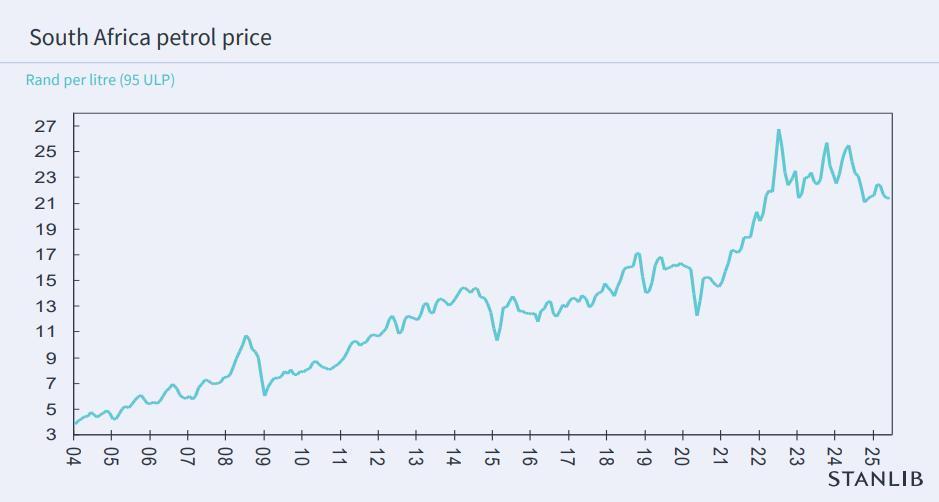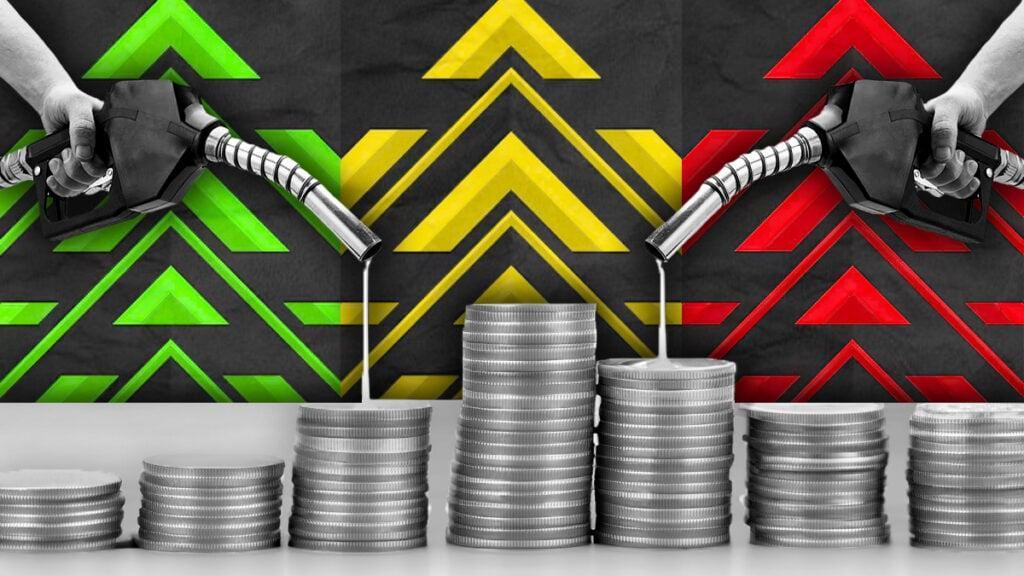Africa-Press – South-Africa. South Africa’s petrol prices have increased by R17 over the past two decades, as the government repeatedly increased the levies placed on fuel and the rand steadily weakened.
In 2004, South Africans were paying around R4 per litre of 95 octane petrol, whereas motorists now pay R21.35 per litre as of June 2025. The rise in fuel prices has a significant impact on the South African economy, with over 85% of goods transported by road at some point in their journey.
This is due to multiple factors, such as the repeated above-inflation increases in the taxes levied on fuel and the rand’s weakening over the past two decades.
The global oil price has also risen over the past twenty years, but has remained relatively flat for the past decade, during which the most significant petrol price increases occurred.
The price of fuel at the pump in South Africa is primarily composed of the Basic Fuel Price, which is determined by the price of oil and the rand-dollar exchange rate, as well as administered components.
These administered components include the General Fuel Levy (GFL), the RAF Levy, transport costs, the retail margin, and the wholesale margin. The levies charged on fuel are one of the primary reasons why the prices of petrol and diesel have soared over the past twenty years in South Africa.
Of all the administered components, the wholesale margin is the only one to have increased at a slower rate than headline inflation over the last two decades.
The rest have all significantly outpaced headline inflation, pushing fuel prices higher and, in turn, increasing the cost of goods in South Africa. In particular, the two most significant taxes on fuel, the GFL and the RAF Levy, have risen significantly since 2006.
The RAF Levy has skyrocketed by 44% in real terms over the past decade alone and has increased sevenfold since 2006. South Africa’s GFL, over the same period, has more than tripled since 2006 and is up over 40% in real terms in the past decade alone.
Combined with the retail margin and transport cost rising fivefold since 2006, these administered components are a significant driver of the rising cost of fuel in South Africa.
The graph below, courtesy of Stanlib chief economist Kevin Lings, shows how the price of 95 octane petrol has risen in South Africa since 2004.

A weak rand and rising oil prices
The other two major factors influencing the rising price of petrol and diesel at the pumps in South Africa are the international oil price and the rand-dollar exchange rate.
International oil prices have been volatile over the past twenty years, with wars in the Middle East, the Global Financial Crisis, COVID-19, and Russia’s invasion of Ukraine leading to significant swings in the commodity’s price.
However, the general trend has been upwards since 2004, with the Brent Crude international oil price rising by 90% over this period. A significant chunk of this increase has occurred in the last week after Israeli strikes on Iran raised fears of disrupted supply from the Middle East.
Excluding this dramatic spike in the past week, the oil price has only risen by 61.5% over the past two decades. While this does not account for the fivefold rise in the price of petrol and diesel in South Africa, the increase in oil prices has been combined with a steadily weakening rand.
This results in a double blow for South African motorists, with an elevated oil price being compounded by a weaker rand, making it more expensive to import.
An analysis by the Bureau for Economic Research (BER) pointed to South Africa’s relatively high inflation rate compared to its more developed peers as the reason for the rand’s weakness.
In the long run, an elevated inflation rate compared to other countries requires a degree of currency depreciation to ensure South Africa’s exports remain globally competitive.
As inflation increases, the costs of producing exports locally become less attractive than cheaper alternatives. To counteract this, a currency is weakened to make the exports relatively cheaper in dollar terms and, thus, more competitive globally.
The BER also pointed to South Africa’s historic current account deficit – the country imports more than it exports – as another major reason for the rand’s weakness.
Consistently running a current account deficit results in money flowing out of the country and less demand for the local currency, weakening it. A major driver of this has been the declining output from South Africa’s mining sector, which is traditionally the country’s biggest exporter. As a result, the value of the rand has collapsed from R7 per dollar in 2004 to trade around R18 per dollar in 2025.
For More News And Analysis About South-Africa Follow Africa-Press






